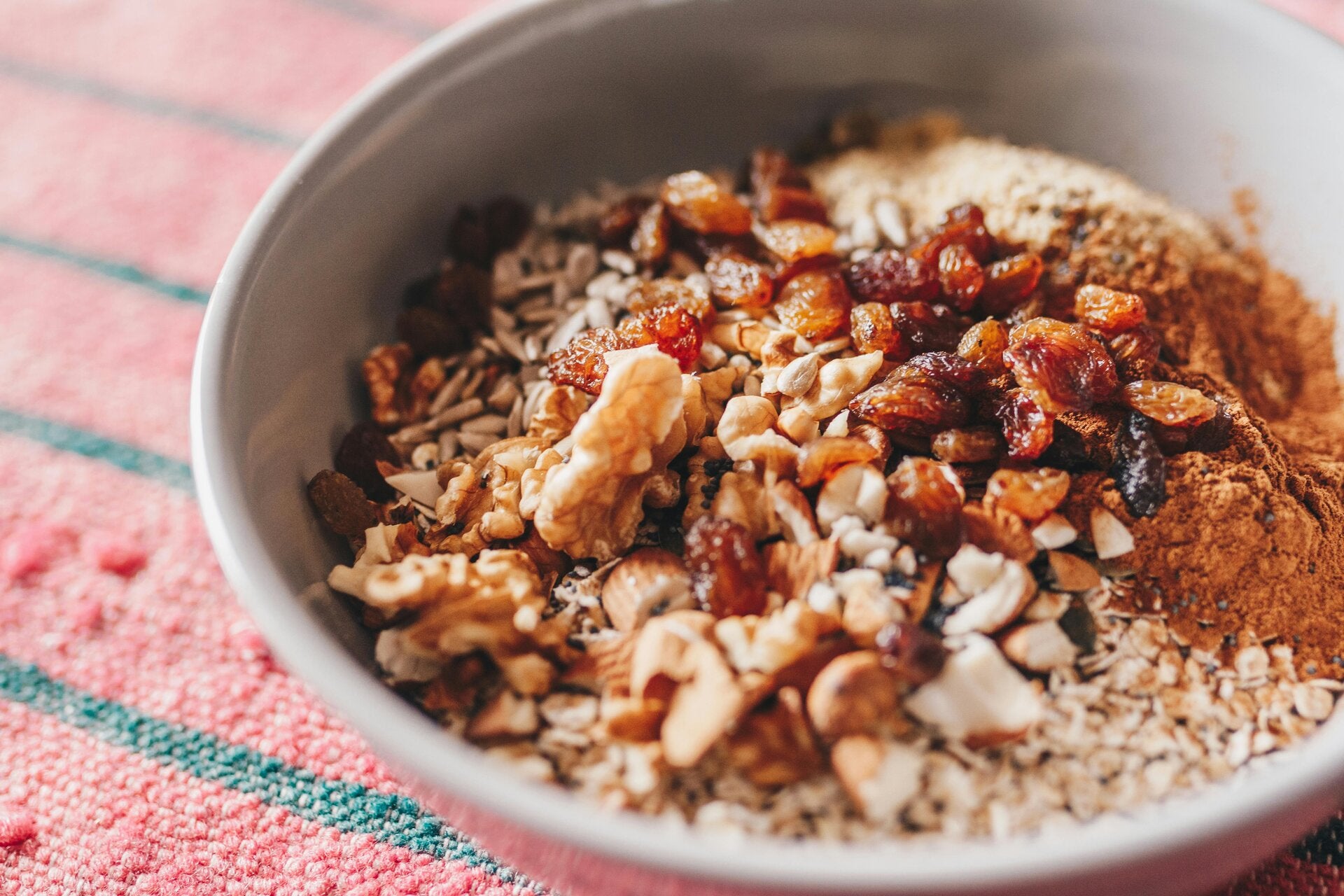We recently chatted to Sally Duffin, a registered Nutritionist based in York and we asked her to talk us through some everyday tips for healthier eating choices during the menopause.
We know the easier the change of food choices are make (and without any faff!) the more likely we'll be able to stick to the changes we make.
Take it away, Sally..
There’s so much information about food and menopause it’s easy to feel overwhelmed by all the different suggestions. As a Reg. Nutritionist who specialises in midlife women’s health, I like to focus on sustainable, everyday changes we can make to support our health and wellbeing. Small changes that become daily habits have the power to transform how we feel here and now, and they build strong foundations for our future health.
With this approach in mind, here are my 3 tips to incorporate into your daily routine during peri/menopause.
Protein
1 – Build your meal around protein
Protein becomes even more important as we go through menopause. We’re losing muscle mass, we can get brain fog and mood swings, and our metabolism shifts, making it easier to gain weight and harder to lose it.
Protein is key because it helps stabilise blood sugars for better metabolic health, it maintains muscle tissue, and it provides the building blocks for mood messengers like serotonin and dopamine.
An easy way to take care of your protein intake is to include a generous palm-sized portion in every meal. Go for meat, fish, poultry, eggs (plural, not just one!), tofu, beans, and pulses. Protein powders like hemp, soy, pea, and collagen can help you top up on protein, but be sure to choose ones without artificial sweeteners.



Fibre
2 – Up your fibre intake
Fibre doesn’t get as much attention as protein but it’s just as important for our long-term health. Soluble fibre from oats, vegetables, beans, and pulses feeds your gut microbiome – the community of microbes that live in your digestive system. In turn, the gut bugs help regulate inflammation, aid digestion, and support immune and brain health.
The key thing to remember with eating more fibre is to go low and slow to give your digestion time to adapt. Too much all at once can cause uncomfortable wind and bloating.
To slowly increase fibre, try:
- A tablespoon of ground flaxseed mixed into to yoghurt or porridge. Better still, add the flax to an Overnight Oats mixture with extra milk or water.
- A handful of raspberries and hazelnuts as a snack.
- Red lentils in vegetable soup.
- An extra serving of vegetables with your main meal.
Phytoestrogens
- Include Phytoestrogens
Phytoestrogens are naturally occurring compounds that have a similar structure to human oestrogen. They can help modulate the effect of our own fluctuating hormone by latching onto selective oestrogen receptors in cells and giving a gentle, oestrogenic signal.
You can find phytoestrogens in traditional soy foods like tofu, tempeh and miso, as well as ground flaxseeds, chickpeas, broccoli, sesame seeds (tahini and houmous are great options), and sprouted mung beans, alfalfa, and red clover.
*For anyone with a history of breast cancer please speak to your oncology team or breast nurse about phytoestrogen - you may be advised against this particular food option.*
Check out the recipe for Menopause Cake which includes different phytoestrogens – yep, that’s right, cake for menopause! ( this is exactly why we love Sally )

When we make small changes and we opt for them regularly, it will help get us better results

Sally Duffin is a health writer, expert speaker, and Registered Nutrition Practitioner specialising in midlife women’s health. She is the author of Natural Nutrition for Perimenopause – What to Eat to Feel Good and Stay Sane and the Substack newsletter Natural Nutrition for the Midlife Shift.
Find her at www.nutritioninyork.co.uk and Instagram - @nutritioninyork


Add comment
Comments
Great nutritional advice for those of us experiencing the menopause.